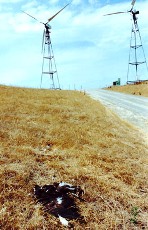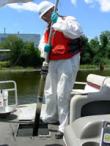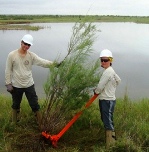During construction activities, Bar-1 Ranch allegedly destroyed 13.9 acres of wetlands along Ninemile Creek in violation of the Clean Water Act.

The 18-year study has resulted in a model that addresses competition and fecundity under climate variables.
In response to an agreement with Riverkeeper, EPA is seeking comment on its proposed regulations to minimize fish impingement and entrainment in cooling water systems.

Birmingham study suggests that birds may not be looking at what obstacles are straight ahead and some of them may not be able to slow their flying speed.
EPA and USDA are monitoring food, rain, and potable water for levels of radioactivity that may have drifted to the United States from Japan.

The agency expects this strategy will save money and speed up PCB remediation effort that has been going on for 29 years.
The Gulf Coast Ecosystem Restoration Task Force also is holding listening sessions in coastal states to get feedback before it has to propose an agenda on Oct. 5.
MIT’s Daniel Nocera said he believes the future world will be powered by photosynthesis and his research has developed one that uses nickel and cobalt to split water into hydrogen and oxygen.
The application, unveiled by Image Matters, confines itself to specific coastal wetlands such as Chesapeake and Delaware bays.
The Cities and the Environment website provides information on the latest research on urban ecology science.

Stephen R. Carpenter wins Stockholm Water Prize; WEF and IWA name water champions; WaterSense and American Water partner on PSAs.

During the last rainy season, almost 125 million gallons of sewage overflowed into San Francisco Bay from the East Bay Municipal Utility District's wet weather facilities.
Using reverse osmosis technology, the underground coal mining company will build an advanced water treatment plant to remove chloride.

The agency is hoping to hire 2,000 people; some positions offer stipends while others are volunteer assignments.

Free i-Tree v.4 software quantifies the benefits of trees in environmental and economic terms.

Restrictions on other rodenticides may increase the use of diphacinone, which researchers report will harm birds feeding on the poisoned pests.
Used under limited circumstances, the rule would allow the New Jersey Department of Environmental Protection to waive strict compliance when such action would not compromise the environment or public health.

Researcher says that the increase in carbon dioxide by about 100 parts per million has had a profound effect on the number of stomata and, to a lesser extent, the size of the stomata.
Carefully managing coastal resources has become increasingly important as impacts of climate change and human use threaten coastal communities and habitat.